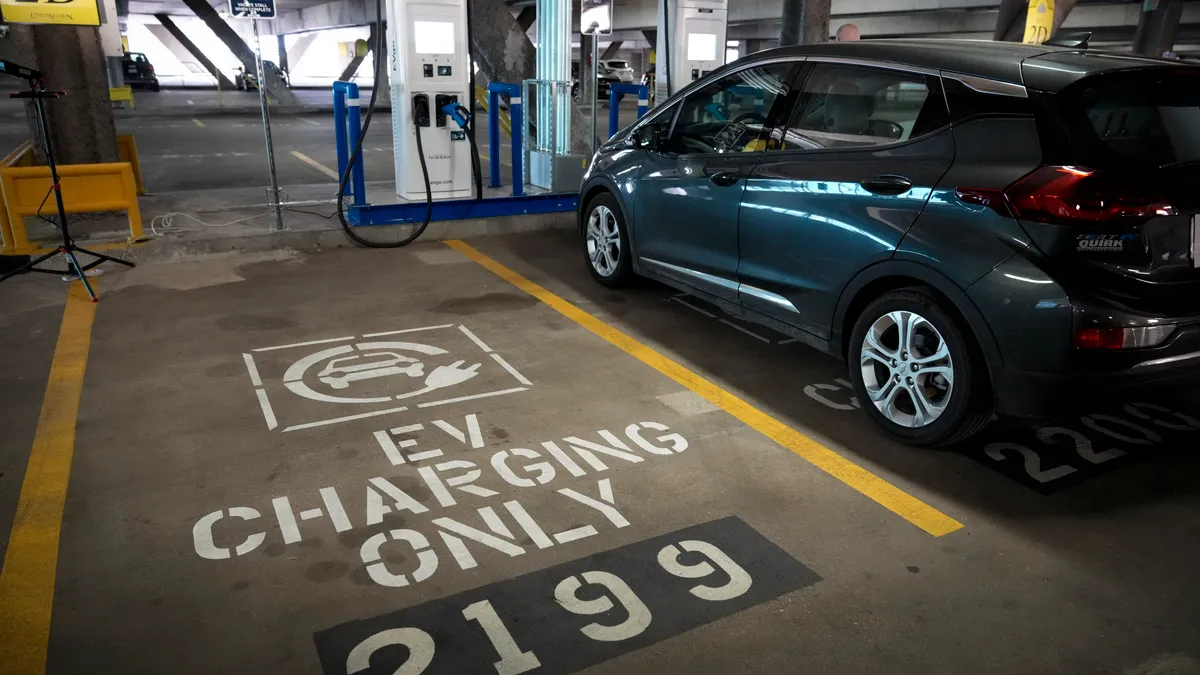Dive Brief:
- Avangrid subsidiary United Illuminating expects to have 3,000 electric vehicles in its Connecticut territory by 2024 and has been working with Bidgely to utilize them as a grid resource and avoid driving higher peak demand when they are charging, Avangrid officials said.
- Avangrid says it is developing a similar program in New York and is still in the process of selecting a long-term vendor in both states. Its work with Bidgely is being done under a one-year partnership announced in May.
- The biggest challenge in serving EV load will be integrating the new demand in ways that do not drive higher peak demand, Charles Spence, Avangrid manager of customer programs and products, said in a July discussion of its load management efforts with Bidgely.
Dive Insight:
Connecticut finished 2021 with about 21,000 EVs registered in the state, but its long-term transportation strategy calls for 500,000 by 2030. As the number of plug-in vehicles in its service territories grows, Avangrid sees three key barriers to harnessing them as a grid resource, Spence said.
“The biggest challenge is obviously integrating that load,” Spence said. “We're seeing just an unbelievable number of vehicles, [and] those vehicles all can consume 60 kWh if they are expended fully and get recharged in a day. That's generally what the whole house uses.”
That load must be integrated on a volume basis as well as timing, he said, to avoid spiking demand when residential customers return home in the evening and plug in their vehicles. Avangrid’s demand response managed charging program in Connecticut helps with that, but other challenges include accommodating varied customer technology preferences when it comes to vehicles and chargers, and ensuring investments and incentives are properly sized.
“Making sure that we're not paying people too much, but on the other hand, [they] aren't being paid so little that they're not interested in participating,” Spence said.
Avangrid, like the rest of the utility sector, is still developing best practices when it comes to utilizing EVs as demand response assets, Spence said. Needs can vary from territory to territory, and between more and less constrained circuits, he said.
In the first year of its Connecticut program, Avangrid could call up to 15 demand response events per month where it controls customer EV chargers to reduce grid stress. Customers are able to opt out of events.
“I doubt we'll ever really call that many ... that's pretty heavy-handed,” Spence said. But the flexibility to call more events allows for the utility to test whether customer participation drops off over time. The utility is also able to use its extensive advanced metering infrastructure network in Connecticut to identify customers who have EVs but are not yet participating in a demand response program, or to better engage with enrolled customers who are not participating.
Avangrid is still building out its program and doesn’t yet have a clear indication of how large a demand response resource EVs can be, said Spence.
“We’ll have a better idea of this total resource after the first program year where we’ve collected data on participation and gathered learnings,” Spence said in an email. “At that point, we’ll able to better estimate things like: average battery size of participating EVs, average participation per participant in terms of curtailable load, and the reliability of the resource overall.”
“The resource is absolutely growing and we expect this to be a substantial flexible resource over time,” Spence said.
Avangrid is working to develop a similar program in New York and in June filed a revised managed charging proposal with state regulators for its New York State Electric & Gas and Rochester Gas and Electric subsidiaries.
Though the New York programs will be larger than Avangrid’s Connecticut efforts, “this will end up being a very similar program, both from the perspective of what regulators have assigned to the utilities in the state, but also in the type of program we implement,” Spence said.















